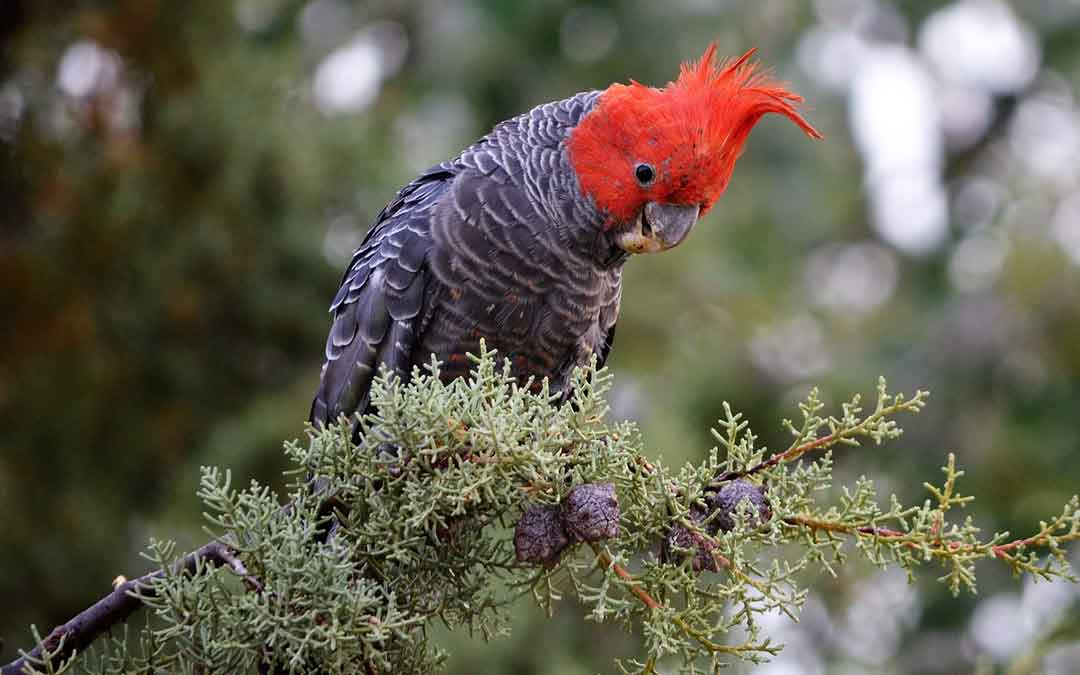Gang-gangs are becoming gone-gones

Gang-gang cockatoos are commonly seen in Melbourne’s suburbs. Often they are seen eating the red berries of cotoneaster or other introduced plants. If you’ve seen them – as I have fairly regularly – it might surprise you to know that gang-gangs have recently been added to the endangered list under Victoria’s Flora and Fauna Guarantee Act.
Gang-gangs are omnivorous and have evolved to eat eucalypt seeds, flower buds, insects, berries and nuts. They usually feed in trees, only coming to ground to drink or collect fallen nuts or berries. In the past, they were seen less in urban areas, and much more commonly in forests. Unfortunately, habitat destruction (particularly from land clearing, fire, climate change and lack of hollows to nest in) and lack of food in the areas that used to be forested, means they are feeding on non-natives in suburban gardens more than ever. So while we suburbanites may be seeing them more: their total numbers are actually declining dramatically.
In fact, it’s estimated their numbers have declined by approximately 69% from 1999 – 2019.
How to identify a Gang-gang Cockatoo
Gang-gang cockatoos (Callocephalon fimbriatum) are relatively small compared to other cockatoos – about 35cm tall. They are sometimes confused with the larger Red-tailed Black-cockatoos (of which the subspecies found in Victoria is close to extinction). Gang-gangs are only found in south-eastern mainland Australia but are now considered extinct on King Island.
Males have bright red heads and curly red crests, with otherwise dark grey feathers edged in white. Females have a dark grey head and some yellow-pink barring on their paler-grey (also edged in white) chest and belly feathers. They are easy to identify – with the male’s red head and their creaky hinge call. Juveniles look like females until the males darken and develop their red heads and crests.
Breeding
Gang-gangs form strong pair bonds and mate monogamously for life. They nest in hollows and usually only lay 1 to 3 eggs each year. Interestingly, both males and females prepare the hollow by chewing up wood from inside the hollow and fusing the wood chips to line the nest.
Report sightings
Gang-gangs head to higher altitudes in the warm weather so enjoy the sight of these gorgeous and endearing birds while you can. And if you see one, try and get a photo or an audio recording of its call on your phone and upload it to citizen science platform iNaturalist so conservationists can keep track of where they are, hopefully increasing their chances of species survival.
Written by Jen Willis
